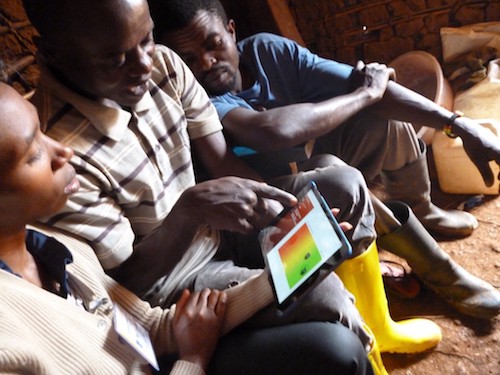Drones, balloons, satellites…What’s the next big thing in global health?
While leading a course at the Tropical Institute of Antwerp, I asked participants (mostly mid-career health professionals from emerging economies) when they thought Internet would be available in the most remote parts of their country. Their median estimate was 2035.
Fortunately, public health experts seem to be as bad at forecasting as economists. Over the last few months, corporate giants have continuously announced progress on their ambitions to provide universal broadband service. Facebook’s first giant Internet drone is expected to fly later this year, Google is beaming Internet from balloons in Indonesia and Sri-Lanka, Space X said it is progressing “swiftly” with its universal cheap broadband satelliteproject, and OneWeb has announced its plan to mass produce 700 universal Internet satellites at a record pace.
It’s not all positive news though: Google’s solar drone crashed in Mexico and public health experts have raised health concerns over balloon Internet beaming. In the end however, competition between tech giants and mobile telephone operators will only intensify and work to provide incentives to succeed. My sense is that Internet in will become available in remote locations starting in 2020.

This is excellent news for the bottom billion of the planet. So far, the rise of mobile Internet has not sufficiently contributed to poverty alleviation and the reduction of inequalities. And neither the health sector in low-income countries nor the aid industry have yet been fundamentally transformed by the tech revolution. The aid sector remains traditionally organized with limited disruptive ideas and models.
“Universal access to Internet will fundamentally reshape the health sector — and aid sector — in ways that are difficult to anticipate now.”
Universal access to Internet will fundamentally reshape the health sector — and aid sector — in ways that are difficult to anticipate now. Despite this, certain future trends can already begin to be identified:
- In 2020, one in two households in rural Africa will have access to a smartphone. Smartphones will become a major source for household health information. Sensitization and health education will increasingly take place through social media. Patient groups like Saga Santé will play a fundamental role in transmitting safe behavior messages — less emphasis will be placed on health facilities and community health workers. Successful telemedicine services provided by private companies through telephone and video will expand, as is already the case in countries like Ethiopia.
- The rise of low-cost and connected diagnostic devices will make health care diagnosis broadly available at point of care level. Low-cost diagnostic tools will be supported by web-based medical algorithms, simplifying medical diagnosis for health workers. This will disrupt the classic health care pyramid in which advanced diagnosis only takes place at hospital level. Private sector providers will adopt these new technologies tools faster than the public sector, who remain constrained by norms and conservative thinking. More than ever, governments will have to integrate the private sector in their health system programs.
- The availability of smartphones at point of care and patient level will drastically reduce the cost of targeting. Health programs will use technology to develop tailored solutions for individuals — patients, community health workers and health staff alike. For example, training will gradually shift from ineffective mass training programs to targeted, personalized e-learning courses based on measured knowledge gaps. Targeted demand side financing interventions, such as cash transfers, will complement supply side interventions.
- Currently, countries are shifting from health system monitoring based on irregular survey data to near real-time data. This transition will accelerate the use of digital tools at the point of care, mobile tools for supervision, and connected devices (e.g. EPI fridges, medical equipment, ambulances). These changes, along with the growing availability of satellite imagery, will only multiply the sources of data. As a result, stewardship and monitoring will shift from survey to near real time data, and then from near real-time to real-time data. A challenge for countries and aid agencies will be to generate monitoring tools from fragmented and heterogeneous data sources. Again, the private sector will play an important role in applying big data analysis methods to health system monitoring.
Internet and technology make centralization attractive and relevant: integrated cloud-based supply chains, efficient data-driven financing systems, e-training modules delivered on tablets or mobile phones, and mobile health sensitization programs. Mobile devices and the Internet make it possible to communicate and interact directly with health providers and patients without intermediaries, such as district teams, aid agencies and NGOs. These actors will find it increasingly challenging to provide added value in an increasingly mobile and digital environment.
Written by Nicolas de Borman, Founder and CEO of BlueSquare. Find him on LinkedIn here and Twitter here.